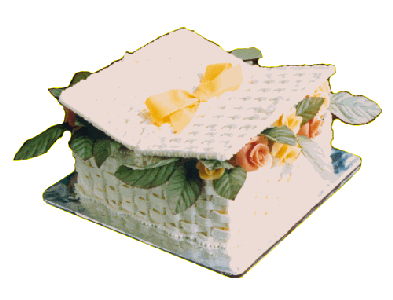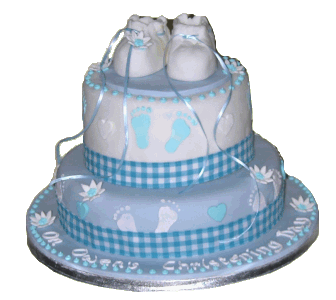Have you tried icing and decorating a birthday cake, a christmas cake, or even a wedding cake? I started icing cakes to help my mother years ago. She would make a Christmas cake every year for the raffle at the church Christmas Fayre but got to the point where her hands were not steady enough, or strong enough, to continue - so I took over doing the actual decoration.
In those days, the icing was done with ALL royal icing and without the advantage of added glycerin to prevent it going rock hard. The skill was to get a smooth coating to start with, with no bumps or dips - not easy, especially at the corners of the cake. Nowadays, of course, most cakes are iced with fondant icing (eg. Regalice) and it is much easier to get a uniform, smooth finish.
Of course, before you have a cake to ice, the cake has to be cooked. My wife usually does the cooking, except for the basic sponge recipe, which I can manage: I then add the icing and decoration.
The basic sponge cake recipe uses equal weight of eggs, flour (self-raising), sugar (we use raw cane) and fat (hard stork) all beaten together, with flavours (coffee, vanilla, cocoa) added to taste and enough liquid (milk or water) to make the mixture of a creamy consistency. The size of the cake determines the number of eggs required, with four eggs making a 20cm (8 inch) square cake.
However, the finished chocolate cake always seemed dry compared to the others no matter how much liquid was added, so we tried alternative recipes, eventually deciding on Mrs. Beeton's Devil's Food cake. This last has been a great success in recent months.
The baking tin is lined with baking parchment which, with the chocolate cake, needs to be removed while the cake is still warm. We have found that if we wait for the cake to cool, the parchment tends to stick - and then on removal it also takes away some of the cake!
For fruit cakes the dried fruit is marinated in rum & brandy for a couple of days before adding the rest of the ingredients. After cooking, more rum/brandy mix is poured onto the bottom of the cake while still warm. This results in a rich, moist fruit cake.
Variations to the ingredients permit the preparation of cakes for people with certain allergies.
- Gluten-free flour is used for those who have a gluten allergy. By itself, this tends to make the cake more crumbly than usual, but this can be overcome by adding a small amount of xantham gum (powder) with the flour.
- Using margarine for the fat, and water as the added liquid, results in a sponge cake suitable for those with lactose intolerance.
- Diabetes sufferers are safe with a fruit cake made to our sugar-free recipe - provided they don't eat any icing decorations. (We once made a birthday cake that was decorated only with double cream and fresh fruit)
- Leaving the nuts out of a fruit cake makes it suitable for those with a nut allergy.
On other pages is a selection of the celebration cakes we have made over quite a long time. We make sponge cakes or fruit cakes and the decoration is tailored to the requirements of the customer.
We like to call them "Personality Cakes".





